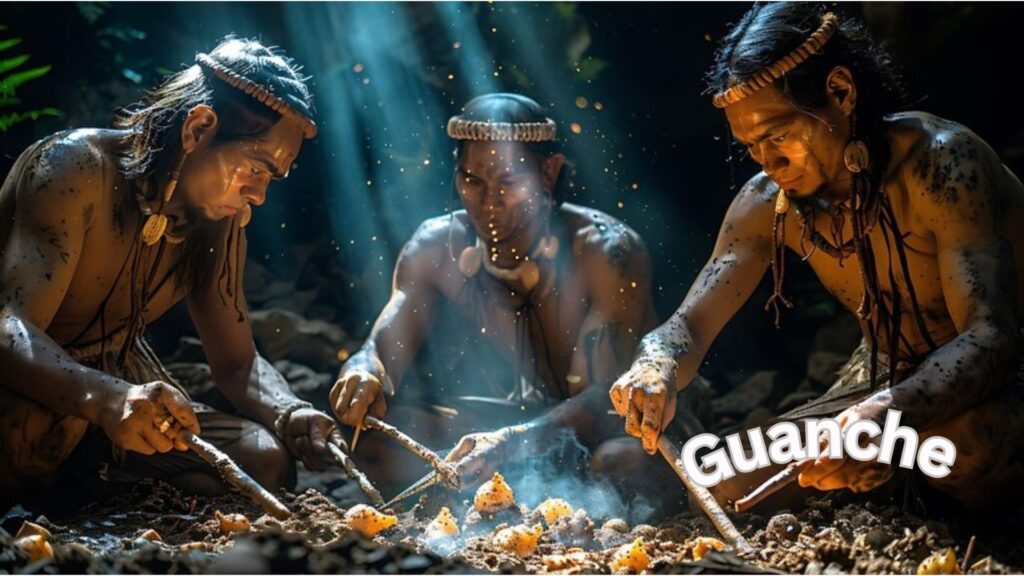The Guanche people, indigenous to the Canary Islands, particularly Tenerife, hold a unique place in history. As the original inhabitants of the islands, they represent a culture that thrived long before the Spanish conquest in the 15th century. This article delves into the history, culture, and legacy of the Guanche people, exploring their origins, way of life, and the impact of European colonization.
Who Were the Guanche People?
The Guanches were the aboriginal inhabitants of the Canary Islands, primarily found on Tenerife. The term “Guanche” originally referred specifically to the indigenous people of Tenerife, but it is now commonly used to describe the indigenous populations of all the Canary Islands.
Origins and Ancestry
The origins of the Guanche people have been a topic of debate among historians and anthropologists. Genetic studies and linguistic evidence suggest that the Guanches were of Berber origin, hailing from North Africa. It is believed they arrived in the Canary Islands around 1000 BC, possibly via primitive boats or even drifting with the currents.
Guanche Society and Culture
The Guanche people lived in a society that was largely isolated from the outside world until the arrival of the Spanish. This isolation allowed them to develop a unique culture and way of life.
Social Structure
Guanche society was organized into small, autonomous kingdoms, known as “menceyatos,” each ruled by a “mencey” or king. The menceyatos were divided into smaller clans or tribes, with each having its own leaders and territories. Socially, the Guanches were divided into nobles, warriors, and commoners, with a clear hierarchy that determined one’s role and status within the community.
Language and Communication
The Guanches spoke a language known as Guanche, which is now extinct. However, remnants of the language survive in place names and a few recorded words. The language was likely related to the Berber languages of North Africa. Interestingly, the Guanches also developed a whistling language called “Silbo Gomero,” which was used to communicate across the rugged terrain of the islands.
Religion and Beliefs
The Guanche religion was polytheistic, centered around a pantheon of gods and spirits. The primary deity was Achamán, the god of the sky, while other important figures included Chaxiraxi, the mother goddess, and Guayota, the god of darkness and evil. The Guanches believed in an afterlife and practiced mummification, similar to the ancient Egyptians, as part of their funerary customs.
The Daily Life of the Guanche People
Agriculture and Food
The Guanches were primarily a pastoral people, relying on agriculture and livestock for sustenance. They cultivated crops like barley, wheat, and beans and raised goats, sheep, and pigs. The Guanches also gathered wild fruits and hunted birds and rabbits to supplement their diet. Their staple food was a type of flour called “gofio,” made from roasted grains.
Housing and Settlements
Guanche homes were typically built from stone and located in caves or sheltered areas. These cave dwellings offered protection from the elements and were often part of larger communities. The Guanches also constructed small stone huts, particularly in the more fertile regions of the islands.
Tools and Technology
The Guanches were skilled artisans, crafting tools and weapons from stone, wood, and bone. They made simple pottery, which they used for cooking and storage, and wove textiles from goat wool. Despite their relative isolation, the Guanches developed a range of technologies suited to their environment, including irrigation systems for agriculture.
The Spanish Conquest and Its Aftermath
The arrival of the Spanish in the 15th century marked the beginning of the end for the Guanche people. The Spanish conquest of the Canary Islands was brutal and resulted in the near-total annihilation of the Guanche population.
The Conquest of Tenerife
The conquest of Tenerife, the last of the Canary Islands to fall to the Spanish, was a protracted and bloody affair. Led by Alonso Fernández de Lugo, the Spanish forces encountered fierce resistance from the Guanches, particularly under the leadership of the mencey Bentor. Despite their bravery, the Guanches were eventually defeated, largely due to superior Spanish weaponry and the spread of European diseases, to which the Guanches had no immunity.
Impact of Colonization
The Spanish colonization of the Canary Islands had devastating effects on the Guanche people. Many were killed in battle, while others were enslaved or succumbed to diseases like smallpox. Within a few generations, the Guanche language and culture were almost entirely eradicated, leaving only traces in the form of archaeological remains and historical records.
The Legacy of the Guanche People
Despite their tragic fate, the Guanche people have left a lasting legacy in the Canary Islands. Elements of their culture, language, and traditions have persisted, influencing the modern identity of the islands.
Archaeological Discoveries
Archaeological sites across the Canary Islands provide valuable insights into Guanche society. Excavations have uncovered mummies, tools, pottery, and cave paintings, shedding light on their way of life and beliefs. The Guanche mummies, in particular, are of great interest, revealing sophisticated embalming techniques that suggest a deep understanding of anatomy and preservation.
Cultural Influence
The influence of the Guanche people can still be seen in modern Canary Island culture. Place names, local festivals, and traditional foods like gofio are reminders of the islands’ indigenous heritage. The Silbo Gomero, the whistling language once used by the Guanches, has even been revived on the island of La Gomera and is recognized by UNESCO as a Masterpiece of the Oral and Intangible Heritage of Humanity.
Conclusion
The Guanche people were the original inhabitants of the Canary Islands, with a rich culture and history that, despite the ravages of Spanish colonization, continues to resonate today. Though much about the Guanches remains shrouded in mystery, their legacy lives on in the islands’ culture, archaeology, and the memories of their descendants. As we continue to uncover more about their lives, we gain a deeper appreciation for the resilience and ingenuity of this ancient civilization.
ALSO READ:The Human Gathering Cult: An In-Depth Exploration of a Unique Spiritual Community
FAQs
Where did the Guanche people come from?
The Guanche people are believed to have originated from North Africa, specifically of Berber descent. They likely migrated to the Canary Islands around 1000 BC.
What language did the Guanches speak?
The Guanches spoke a now-extinct language known as Guanche, which was likely related to the Berber languages of North Africa. They also developed a unique whistling language called Silbo Gomero.
How did the Guanche people live?
The Guanches were primarily pastoralists and farmers, living in stone houses or caves. They practiced agriculture, raised livestock, and hunted wild animals. Their society was organized into small kingdoms known as menceyatos.
What happened to the Guanche people?
The Guanche people were nearly wiped out following the Spanish conquest of the Canary Islands in the 15th century. Many were killed in battle, enslaved, or died from diseases introduced by the Europeans.
What is the legacy of the Guanche people today?
The legacy of the Guanche people is still evident in the Canary Islands through place names, cultural traditions, and archaeological sites. The Silbo Gomero language and the traditional food gofio are examples of this enduring influence.







